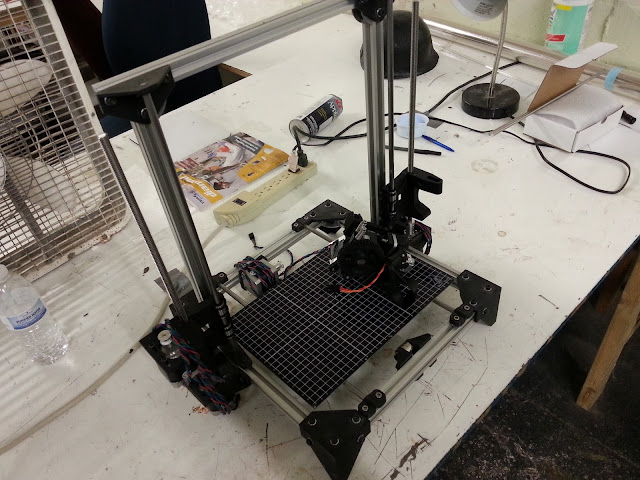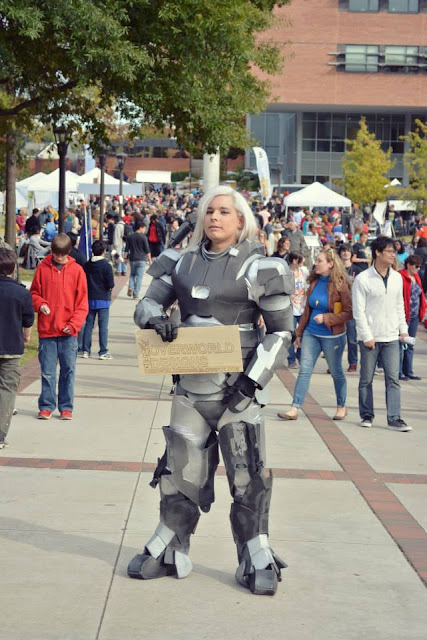With less than 70 days left to Dragon Con, I wanted to post up an update on my current works in progress before I don't have any free time!
The main event this year is Vi. I feel like I've been working on her for months and months now, but the reality is that other projects got way in the way and had to put it on hold for a while. Thankfully I'm back in full swing now! The goggles are finished and ready. The legs are fully 3D printed and currently being cleaned up. The backpack and shoulder armor is being 3D printed at this time and will be finished in a few weeks. I've commissioned Katja Von Designs, the woman who made my Princess Peach dress last year, to make the jacket and corset.
My custom built 3D printer is very nearly finished. At this point I have everything I need, and I just need to machine some of the aluminum parts before it's ready to start being used. Finally!
In my spare time, I've been slowly chipping away at a handful of helmets I have from Shawn Thorrson - the Iron Man Mk 3, the War Machine, and the Iron Man Godkiller. I've had these for a while and I really should finish them and have them available to display!
I'm also trying to get a couple new Ultron 5 helmets out the door!
I also recently picked up an Ant-Man helmet from a friend and I'm trying to get that ready to wear to the Ant-Man premiere next month.
Very shortly I'll be starting on Furiosa's bionic arm for my friend Laura. As you can see, she's already really excited to get started!
Someone asked me recently how I achieved the metal look in some of the things I've built, so I wanted to share that here. I use these three Rust-Oleum paints for the base of any grey / silver metallic paint job that I do:
The Aluminum is used as a base coat, and the Matte Nickel and Charcoal are applied in varying layers to give different looks. For example with the Gravity Gun, I alternated light coats of each color to give a worn metal look.
More soon.
The main event this year is Vi. I feel like I've been working on her for months and months now, but the reality is that other projects got way in the way and had to put it on hold for a while. Thankfully I'm back in full swing now! The goggles are finished and ready. The legs are fully 3D printed and currently being cleaned up. The backpack and shoulder armor is being 3D printed at this time and will be finished in a few weeks. I've commissioned Katja Von Designs, the woman who made my Princess Peach dress last year, to make the jacket and corset.
My custom built 3D printer is very nearly finished. At this point I have everything I need, and I just need to machine some of the aluminum parts before it's ready to start being used. Finally!
In my spare time, I've been slowly chipping away at a handful of helmets I have from Shawn Thorrson - the Iron Man Mk 3, the War Machine, and the Iron Man Godkiller. I've had these for a while and I really should finish them and have them available to display!
I'm also trying to get a couple new Ultron 5 helmets out the door!
I also recently picked up an Ant-Man helmet from a friend and I'm trying to get that ready to wear to the Ant-Man premiere next month.
Very shortly I'll be starting on Furiosa's bionic arm for my friend Laura. As you can see, she's already really excited to get started!
Someone asked me recently how I achieved the metal look in some of the things I've built, so I wanted to share that here. I use these three Rust-Oleum paints for the base of any grey / silver metallic paint job that I do:
The Aluminum is used as a base coat, and the Matte Nickel and Charcoal are applied in varying layers to give different looks. For example with the Gravity Gun, I alternated light coats of each color to give a worn metal look.
More soon.








































